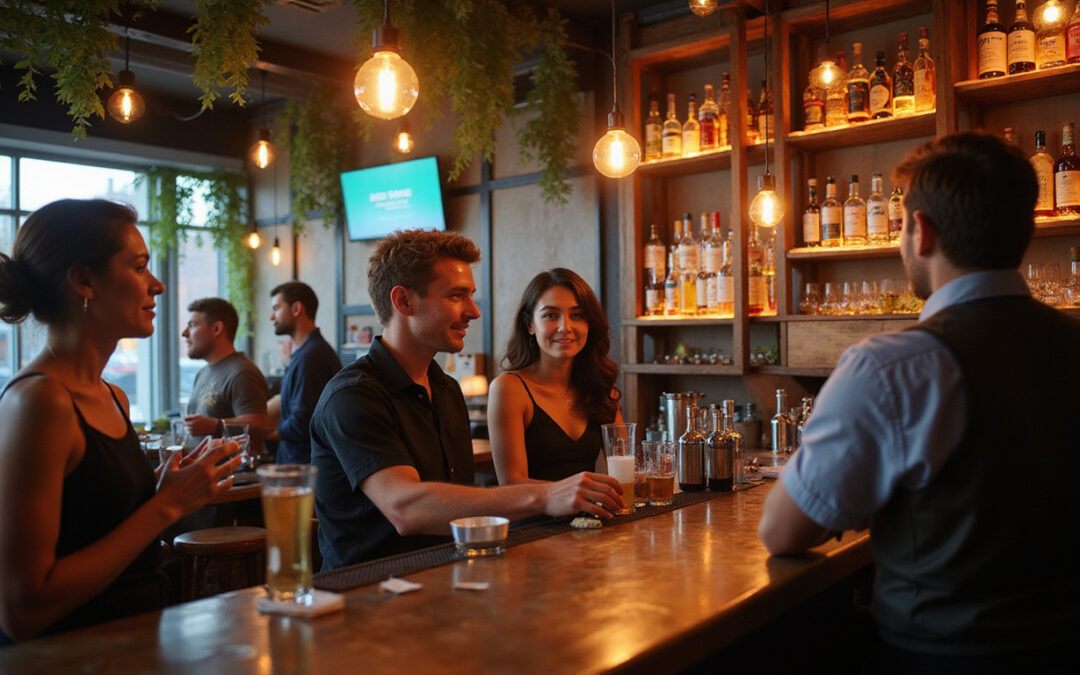Alcohol overservice prevention matters for safe drinking. Bars, restaurants, clubs, and event venues must use clear rules to stop unsafe drinking. Overservice endangers patrons. It also brings legal risks and extra costs for businesses. In this article, we list practical steps that keep bars safe and communities healthy.
Understanding Alcohol Overservice and Its Consequences
Before you act, know what overservice means. It happens when a patron gets more alcohol than they can handle. Servers may give drinks to a person who is already drunk or ignore warning signs. This overservice leads to problems such as:
• A higher chance of accidents like drunk driving or falls
• Medical issues, including alcohol poisoning
• Conflicts and violence from poor choices
• Legal problems like fines, loss of license, or closure
Good prevention cuts these risks by making service clear and safe.
Key Strategies for Alcohol Overservice Prevention
Bars can use many steps to fight overservice. Here are measures that work well:
1. Staff Training and Certification
Train staff to spot signs of intoxication. They must know how to act when troubles come. Courses like Responsible Beverage Service (RBS) give them skills. Staff learn to:
• Spot drunk patrons
• Politely say no to more drinks
• Follow the law for serving alcohol
Regular training keeps these skills sharp.
2. Implementing Standardized Policies
Make clear rules about alcohol service. Clear rules help staff know what to do. A set policy might include:
• A limit on drinks per patron in a set time
• A list of clear signs of intoxication
• Steps for handling an aggressive or drunk patron
Write down these policies and review them with every shift.
3. Monitoring Patron Behavior Closely
Watch patrons closely to catch early signs of intoxication. Staff can check for:
• Slurred words and bad balance
• Shouting or rowdy acts
• Being too loud or drowsy
Giving one person the role of watch can help a lot.

4. Using Technology and Tools
Tools can help stop overservice. They add a check to what staff do. Examples include:
• ID scanners to check age and block underage drinking
• Software that tracks each drink per person or table
• Portable breathalyzers (when allowed) to check intoxication
These tools work with staff to keep service safe.
5. Alternative Beverage and Food Options
Serve food and non-alcohol drinks to slow down alcohol intake. Venues can:
• Offer tasty mocktails and non-alcoholic drinks
• Pair food with alcoholic drinks
• Give water freely and suggest a water break between drinks
This mix helps stop quick drinking and appeals to all.
6. Limit Promotions That Encourage Excessive Drinking
Some deals make overservice worse. If promotions push fast drinking, they can hurt safety. To help, venues should:
• Skip deals that encourage rapid drinking
• Use ads that support safe drinking habits
• Set limits on how many drinks can be sold at busy times
These limits stop unsafe habits.
7. Collaborating With Law Enforcement and Community Organizations
Work with local police and groups to boost safety. Venues can:
• Join local safety campaigns
• Go to training sessions with law officials
• Report any incidents with drunk patrons quickly
This teamwork helps keep the scene safe.
Benefits of Effective Alcohol Overservice Prevention
Stopping overservice brings benefits:
• Enhances patron safety by reducing accidents and injuries
• Protects a venue’s reputation by showing care for customers
• Cuts legal risks by following rules well
• Boosts staff confidence to handle any challenge
With these benefits, businesses gain trust and improve local safety.
Best Practices for Implementing Prevention Strategies: A Checklist
Use this checklist to follow best practices:
- Train all staff often on safe alcohol service.
- Write and use clear service rules that follow the law.
- Keep a close eye on patrons for early signs of trouble.
- Use tech like ID scanners and drink trackers.
- Offer good non-alcohol drinks and food with alcoholic options.
- Do not push fast drink deals.
- Work with local programs and law officials.
- Write down any incidents and staff actions.
This clear plan helps staff and keeps the venue safe.
FAQ: Alcohol Overservice Prevention
What is alcohol overservice prevention?
It means using rules, training, and checks to stop giving more alcohol to people who are too drunk. The goal is to keep everyone safe and follow the law.
How can establishments recognize signs of alcohol overservice?
Staff should look for slurred speech, poor balance, mood swings, anger, and trouble with simple tasks. Finding these signs early stops more alcohol from being served.
Are there legal requirements for alcohol overservice prevention?
Yes. Most places hold venues responsible if a drunk patron causes harm. Laws require proper training, safe service, and a stop once a patron shows signs of being too drunk.
Conclusion
Stopping overservice is key to keeping venues safe and healthy. With well-trained staff, clear rules, careful watching, helpful tools, smart promotions, and community work, businesses cut risks. These steps help the venue meet legal rules and build trust with customers. For more tips on safe alcohol service, visit the U.S. National Institute on Alcohol Abuse and Alcoholism.
By using these steps, venues follow legal rules and give patrons a safe, pleasant time.


